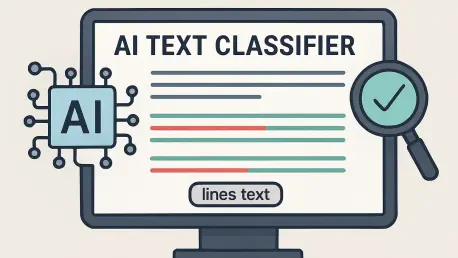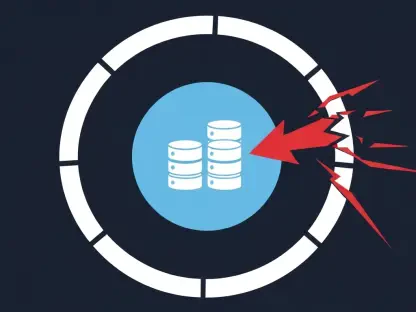I’m thrilled to sit down with Oscar Vail, a renowned technology expert whose groundbreaking work in emerging fields like quantum computing, robotics, and open-source projects has positioned him at the forefront of innovation. Today, we’re diving into his insights on a revolutionary approach to testing AI text classification systems, inspired by recent advancements from MIT’s Laboratory for Information and Decision Systems. Our conversation explores the critical role of text classifiers in everyday life, the challenges of ensuring their accuracy, the impact of adversarial examples, and the innovative tools designed to strengthen these systems. Join us as we unpack how these developments are shaping the future of AI reliability and robustness.
Can you explain what text classifiers are and why they’ve become so vital in our daily interactions?
Absolutely. Text classifiers are algorithms that analyze and categorize text based on its content. They’re behind a lot of things we take for granted today, like sorting emails into spam or inbox, figuring out if a movie review is positive or negative, or even flagging inappropriate content online. Their importance comes from the sheer volume of text data we deal with—think chatbots handling customer service or apps summarizing news articles. They help automate decisions that would otherwise take humans hours, making our digital world more efficient and manageable.
What sparked the need to rethink how we test the accuracy of these text classifiers?
Well, as these systems became more integrated into critical areas like finance or healthcare, we started noticing that they weren’t always as reliable as we needed them to be. Traditional testing methods often missed subtle flaws—classifiers could be thrown off by tiny tweaks in text that shouldn’t matter. For instance, a chatbot at a bank might misclassify a response as financial advice, which could lead to legal issues. That kind of vulnerability pushed us to develop better testing approaches to catch and address these weaknesses before they cause real-world problems.
I’ve heard the term ‘adversarial examples’ in your work. Can you break down what that means for someone new to the concept?
Sure, adversarial examples are essentially test cases designed to trick AI systems. In the context of text classifiers, they’re sentences that are very similar to ones the system has already categorized correctly, but with slight changes—like swapping a single word—that cause the classifier to make a wrong call. It’s a big deal because it shows how fragile some systems can be. If a classifier labels a positive review as negative just because of one word, imagine the implications in more sensitive areas like detecting misinformation or hate speech.
It’s fascinating that sometimes just one word can completely flip a classifier’s decision. What do you think makes certain words so powerful in this context?
It really comes down to how these models are trained. Classifiers often rely on patterns in data, and some words carry a disproportionate amount of weight in those patterns due to their context or rarity. We were honestly surprised at first by how often a single word could cause a flip, but digging deeper, we found it’s often tied to emotionally charged or highly specific terms. Identifying these words involved analyzing thousands of examples to see which changes consistently led to errors, revealing a small but critical set of troublemakers.
Can you walk us through how your innovative software, SP-Attack, improves the testing process for text classifiers?
Of course. SP-Attack is designed to generate adversarial examples efficiently by focusing on those high-impact words I mentioned. Unlike older methods that randomly tested word substitutions—a slow and hit-or-miss approach—SP-Attack uses large language models to create targeted, tricky sentences that are likely to fool a classifier while still retaining the original meaning. This makes the testing process faster and more revealing, helping developers spot vulnerabilities in their systems with much less computational effort.
Alongside SP-Attack, you’ve also created SP-Defense. What’s the purpose behind this tool?
SP-Defense is the other half of the equation—it’s about fixing the vulnerabilities that SP-Attack uncovers. Once we have adversarial examples that fool a classifier, SP-Defense uses those examples to retrain the model, essentially teaching it to recognize and resist these tricks. The goal is to build a tougher, more robust classifier that doesn’t buckle under subtle text changes, which is crucial for applications where accuracy is non-negotiable, like filtering sensitive information or blocking harmful content.
Your findings showed that a tiny fraction of words can cause a huge number of classification errors. How did you pinpoint these high-impact words?
We tackled this by leveraging large language models to analyze massive datasets of text, looking for patterns in misclassifications. Through some sophisticated estimation techniques, we narrowed down a vocabulary of about 30,000 words to just a fraction—one-tenth of 1%—that accounted for nearly half of the errors in certain cases. These tend to be words with strong contextual or emotional weight, though it does vary by application. For example, in sentiment analysis, words tied to extreme emotions often have more sway than in technical categorizations.
What’s your forecast for the future of text classification systems and their reliability in critical applications?
I’m optimistic but cautious. The advancements we’re seeing, like tools for better testing and retraining, are paving the way for much more reliable systems. In the next few years, I expect we’ll see classifiers that can handle adversarial challenges with greater resilience, especially as we integrate more sophisticated language models into the process. But the flip side is that as these systems become more widespread in critical areas—think medical diagnostics or security—the stakes will keep rising. We’ll need continuous innovation to stay ahead of new vulnerabilities, ensuring trust and safety in every interaction.









